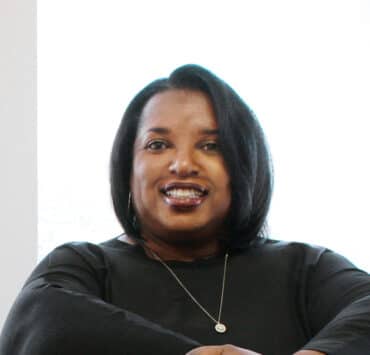|
Getting your Trinity Audio player ready...
|
Matthew Ebersold admittedly has always been a left-brained person. “I’ve always been drawn to math and science and things of that nature,” shares Ebersold, who is treasurer at Eastman Kodak. “I went to SUNY Cortland College, and I really didn’t have a path to follow. I started off with economics as my major and after a few years of working more than I was actually going to school, I came home without a degree.”
He transitioned to St. John Fisher College in Rochester, New York, and pursued accounting as well economics. The dual degree landed him a job out of college at PricewaterhouseCoopers, where he stayed almost a decade and moved up the ranks quickly to a senior manager position and had a two-year tour in PwC’s National Office.
His last position before Kodak was in Cincinnati, but his family was itching to be back home. Ebersold started looking for a way back to Rochester and found a position at Kodak as an assistant controller, doing technical accounting research and working in the M&A area.
Shortly after joining the company, Kodak filed for bankruptcy. Ebersold spent most of his time on the carve-out financial statements for businesses the company ultimately sold as part of its emergence from bankruptcy.
“Fortunately, an opening came up in treasury in 2013, and I started working on the capital markets side,” he explains. “I kept gaining experience across all aspects of what we do for Kodak with treasury, which covers cash management, debt, insurance risk management—and I increasingly took on more and more responsibility.”
He continued to climb the ladder and in 2019 was named corporate treasurer of Eastman Kodak. He was only in the job for a few months when the COVID-19 pandemic hit.
“It was a difficult time to take over the role because three months after taking the job, we had this crisis, and the company has continued to burn cash over the last decade or more,” Ebersold explains. “We were really getting to the point where we couldn’t continue to spend without finding other ways to generate cash, so it was certainly a tough time.”
“We were really getting to the point where we couldn’t continue to spend without finding other ways to generate cash, so it was certainly a tough time.”
Matthew Ebersold
The response to COVID required drastic cash-conserving efforts, including the majority of employees going on furlough or taking a temporary pay cut.
“We cut costs back on spend for inventory and wherever we could,” Ebersold notes. “As we got to December, both of our debt facilities were coming due in 2021—our ABL credit agreement and our Series A preferred shares. We had to address both to make sure that the company had viability going forward and spent about three months on that project. We came out with a really, really good result.”
Kodak’s refinancing fundamentally is a game-changer. CEO Jim Continenza, CFO David Bullwinkle, General Counsel Roger Byrd, and Ebersold, among others, worked together to negotiate the new financing. Kodak entered into a $275 million term loan credit facility, issued $25 million of convertible notes, and also issued $10 million of common shares to Kennedy Lewis Investment Management, who led both the term loan and the convertible note.
“In order to address the Series A preferred shares, we took $100 million of the proceeds we got from Kennedy Lewis and redeemed $100 million of the Series A preferred shares,” he says.
The company exchanged the remaining $100 million of Series A preferred shares for $100 million of Series B preferred shares with Southeastern Asset Management and also issued $100 million of Series C preferred shares to Grand Oaks Management. Lastly, the company amended and extended a $90 million ABL credit facility and entered into a new $50 million cash collateralized letter of credit facility.
One of Ebersold’s key initiatives while he was assistant treasurer was leading a project to institute a new treasury management system. Kodak had used Quantum for more than fifteen years, but it wasn’t implemented the same across all international sectors and didn’t have true insight into the overall cash and positioning around the globe.
“The company is now in growth mode. The expectation is that we’re going to start to invest to drive growth.”
Matthew Ebersold
“We were doing a lot of manual work through Excel, and reporting that came up on a daily, weekly, and monthly basis from our regional treasury teams,” Ebersold recalls. “We looked at a few different treasury management systems and ultimately decided that Kyriba served us the best and moved ahead with them. We now have a system where I can review daily and see cash positioning around the globe.”
As the company shrank over the years, Kodak’s treasury department now only has Ebersold and one other person supporting insurance and risk management activities.
“With both the treasury management system and insurance and risk management, what we’re trying to do is automate as much as we can,” he explains. “That’s not always easy from an insurance perspective, but we’ve put in some different practices to use Excel to allow our teams around the globe to give us the information we need in order to renew our global policies as seamlessly as possible.”
From a financing perspective, Kodak now has a healthy cash balance in the US, and globally is close to $400 million.
“The company is now in growth mode,” Ebersold says. “The expectation is that we’re going to start to invest to drive growth. We now have the cash that we didn’t have before to invest in our growth strategies and create return. The refinancing provided the breathing room over the next five years to implement changes to make us a successful company long-term.”

